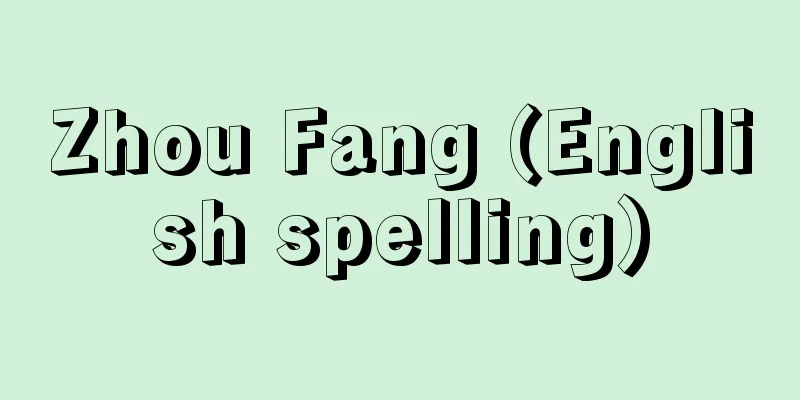Azuchi Sect Debate - Azuchi Shuron

|
The incident began in mid-May 1579 (Tensho 7) when Jodo sect elder Reiyo Gyokunen was preaching in the castle town of Oda Nobunaga when Nichiren sect followers Owaki Densuke and Takebe Shochi started a debate with him. Gyokunen avoided a debate with the two and asked for a monk from his sect to be brought to him. Soon three Nichiren sect scholars from Kyoto, Nittai, Nichien, and Nikko, were summoned to Azuchi, and a sect debate was held on May 27th at Jogon-in temple in the castle town, surrounded by heavy guards. However, before the battle could be concluded, the Nichiren sect was declared defeated, and many of the monks and believers who were present at the scene were arrested. Among them, Fuden, who had been actively engaged in missionary activities, and Owaki Densuke, who had started the incident, were killed in front of Nobunaga, and the three monks who lost the debate were required to write a pledge not to engage in any future debates with other sects. In a sense, Nobunaga used this sect debate that took place in the castle town as a tool to oppress the Nichiren sect, and it can also be said to be an incident in which the Nichiren sect was oppressed. With the Azuchi sect debate as a turning point, the Nichiren sect's previous aggressive missionary attitude disappeared, and the activities of missionary monks who were active outside the temples were significantly restricted. This was significant as it was the first step towards the Edo Shogunate's later control of Buddhism. [Takashi Nakao] Source: Shogakukan Encyclopedia Nipponica About Encyclopedia Nipponica Information | Legend |
|
織田信長の城下安土(滋賀県近江八幡(おうみはちまん)市)で行われた浄土宗と日蓮(にちれん)宗の宗論事件。1579年(天正7)5月中旬、浄土宗の長老霊誉玉念(れいよぎょくねん)が城下で説法をしていたところ、日蓮宗の信者大脇伝介(おおわきでんすけ)と建部紹智(たけべしょうち)が問答をしかけたので、玉念は2人との問答を避け、宗門の僧を出せと答えたことに端を発する。やがて京都の日蓮宗の学僧日諦(にったい)、日淵(にちえん)、日珖(にっこう)の3人が安土へ呼び出され、5月27日城下の浄厳院(じょうごんいん)において、ものものしい警固のなかで宗論が行われた。しかし決着がつかないうちに日蓮宗の負けが宣告され、その場にいあわせた僧侶(そうりょ)や信者たちが数多く捕らえられた。なかでも積極的な伝道活動を行っていた普伝や、事件の発端をつくった大脇伝介は信長の面前で殺され、問答に負けた僧侶3人には、今後は他宗に対して法論をしかけないことなどの起請文(きしょうもん)を書くことが要求された。いわば信長は、城下で起こったこの宗論事件を日蓮宗弾圧の具に使ったのであり、日蓮宗弾圧事件ともいえる。安土宗論を契機として、日蓮宗では従来の強引な布教態度が姿を消すとともに、寺院を離れて活躍する伝道僧の行動が著しく制限されるようになった。それは、のちに江戸幕府が行う仏教統制への第一歩として、重要な意味をもっている。 [中尾 尭] 出典 小学館 日本大百科全書(ニッポニカ)日本大百科全書(ニッポニカ)について 情報 | 凡例 |
Recommend
Indulgence - indulgentia; indulgence
A term used in the Catholic Church. Today, the ter...
tonal harmony
...This became decisive in the 18th century with ...
Okinajima
A small island in the northwest corner of Lake Ina...
Scattered wave communication
Radio waves that are diffusely reflected when they...
Wilson, S.
...The musicals by these two are old-fashioned, s...
Mother - Haha
[1] 〘Noun〙 (Even in the era of "hawa") 1...
Sweet and sour
Vinegar with a low sourness made by mixing mirin o...
Un - Yes
〘Noun〙 (transliteration of hūṃ) Buddhist term. The...
Kingdom of Luang Prabang - Kingdom of Luang Prabang
The first kingdom of Laos was formed in the 14th c...
Tales of the warrior
These stories are based on experiences in martial ...
Saussurea lappa (English spelling) Saussurealappa
…[Mitsuru Hotta] [Aya Nitta]. … From [Koka] ...Na...
Jump band
...In the late 1930s, white swing bands took the ...
Sorghum wine (Kaoliang liquor) - Sorghum wine
A Chinese distilled liquor made primarily from sor...
Caulerpicin
...In Polynesia, it is eaten as a salad. However,...
OSSK - OSSK
...In 1926, "Spring Dance" became popul...









